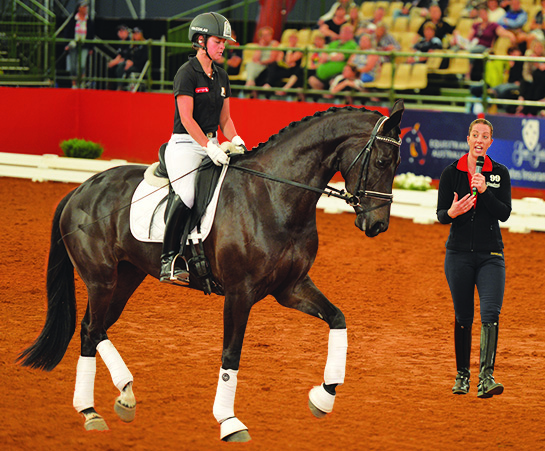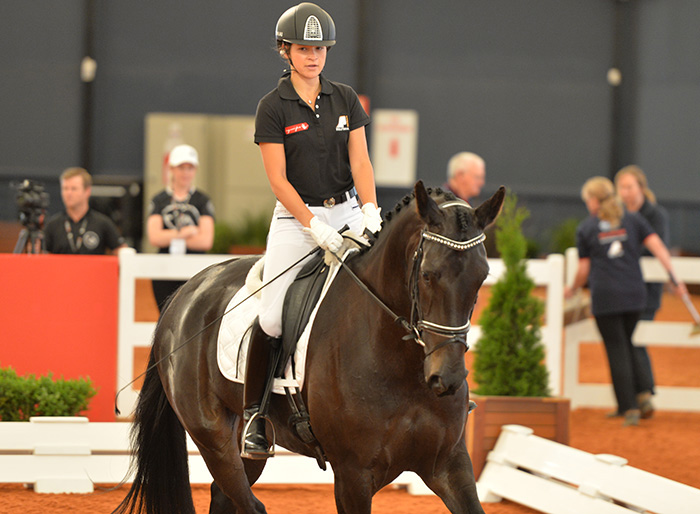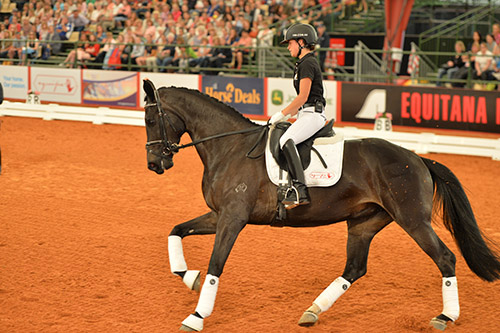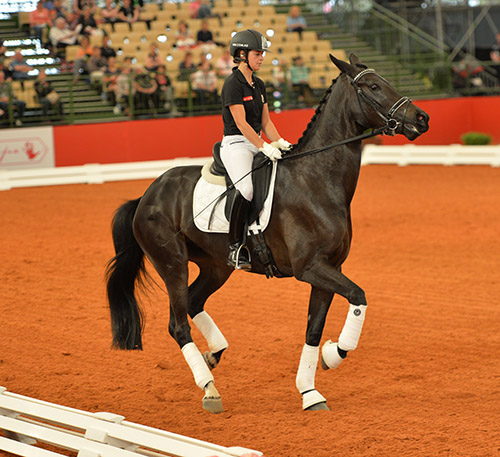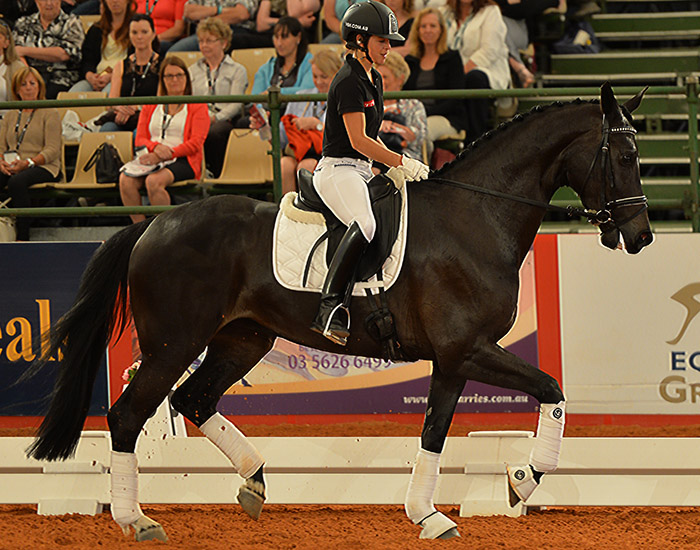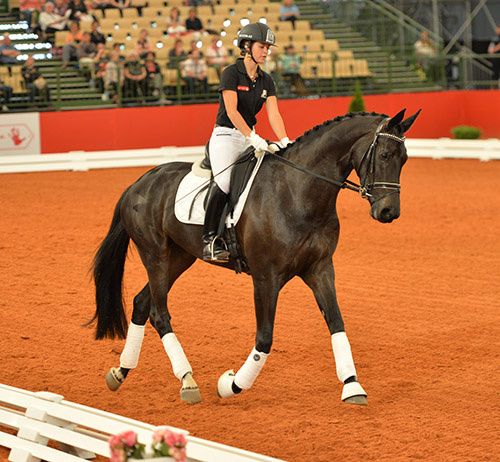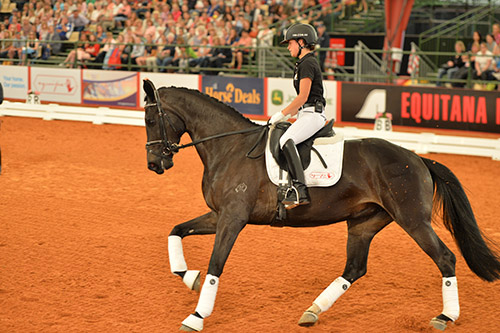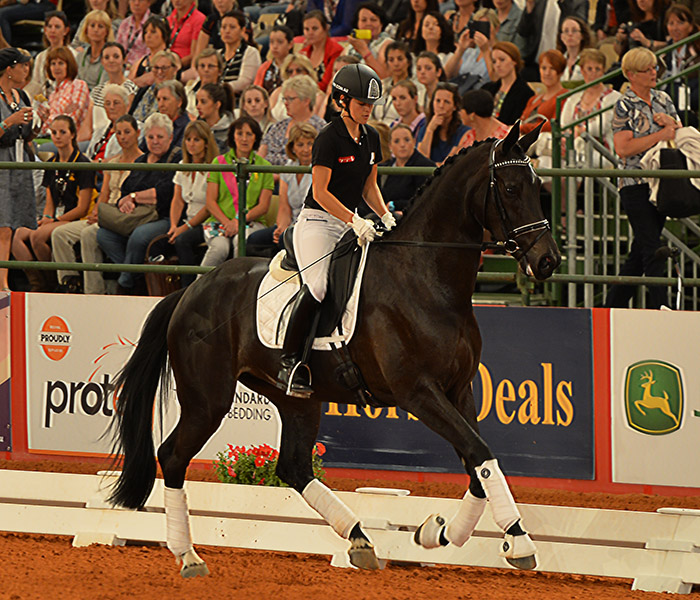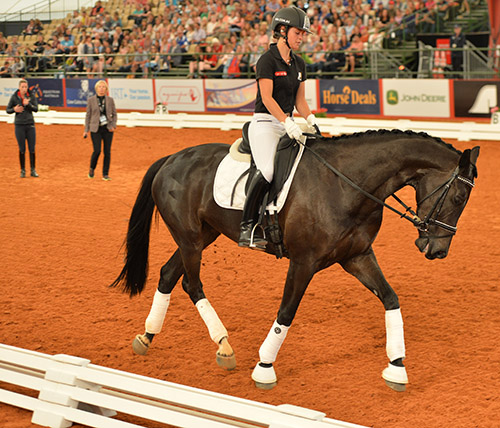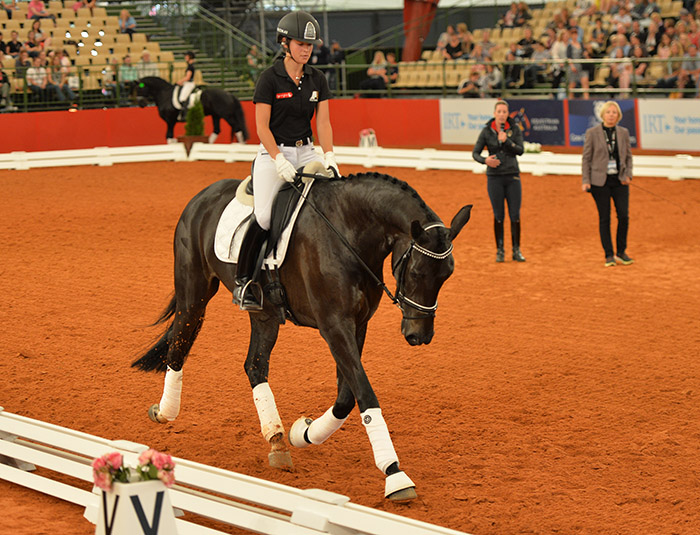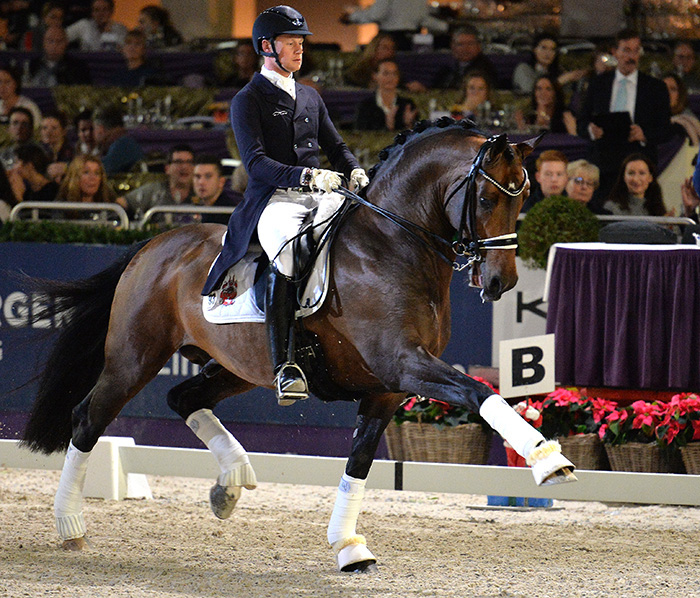Charlotte Dujardin talking about working with young horses. Hard in the atmosphere of the Masterclass… Although Lilah Nieuwland’s four-year-old, Bloomfield Fürstin Romance was coping well, and Charlotte was sympathetic:
“There is so much atmosphere, just try to give her a nice time and build her confidence, let her look, pat her on the neck. You don’t have to keep her round and on the bit, and don’t stretch young horses in this sort of situation, it’s not safe – keep the contact until they relax.”
“Don’t do too much with young horses,” Charlotte stressed, “I do 20 minutes with most four year olds. Walk, trot, canter, on the bit, straight. Educate them in a really easy way, relaxed trot, easy canter, work on steering and control, and work from there.
With a bigger horse, like this one, I’d do less, because they wear out quicker.”
Romance has a little spook. Charlotte is laughing: “That’s the fun of a four-year-old, the excitement of possibly being bucked off. She’s afraid, you’ve got to give her confidence, you relax and let her relax. Drop your whip, pat her, she is starting to relax and getting more swing.”
“With a four-year-old, hundreds and thousands of transitions all through the session. Transitions get them listening, make them stronger. If you look up you’ll be able to ride her in a straight line…”
But not just any transition. Forward, round, and into the transition.
“That was a really bad transition from you. Now it’s a case of pat the horse, slap the rider. Her job is to educate the horse, and she just rode it like an Advanced horse. If we see this horse in the future with bad transitions, blame Lilah.”
Next the trot / canter transition:
“That’s a showjumping transition, rising trot to canter, that’s cheating!”
And the transition down: “Another sloppy transition, not making the horse more round, not making it more forward, just pull on the rein. Round and forward to trot, that’s a transition. No more sloppy disgusting transitions, don’t be a lazy rider.”
“Lilah should spend most of her time doing basic transitions, until she can go up, down, without the horse’s neck coming up, she must be strict with herself. Was that good enough? No. Do it again.”
“When I first saw Lilah two days ago, the mare trotted at snail’s pace, she would have had time faults in a test. When she told me the horse was ‘hot’ I almost fell over. She is much better today but it is true, when people ride young horses, all most of them want to do is go slow. You have to ride them forward and that is actually easier than holding them back.”
“What did you think of that transition?”
“Her head came up.”
“Did you do anything? No. You must be strict and ride every transition. Make the transition forward to walk, don’t fall in a heap, don’t shorten the reins you cheat!”
“You’ve got to think of dropping her neck down, forward with the legs, stretch down, round, keep round, and forwards to trot. Yes! We’ve made it.”
And now, Romance was invited to stretch:
“Now you can see she wants to stretch. This is why we don’t worry about stretching at first – after ten or fifteen minutes, they are going to want to stretch…”
Breeding a dressage horse this season? Go to www.ihb.com.au
Like Foundation, and many more!

